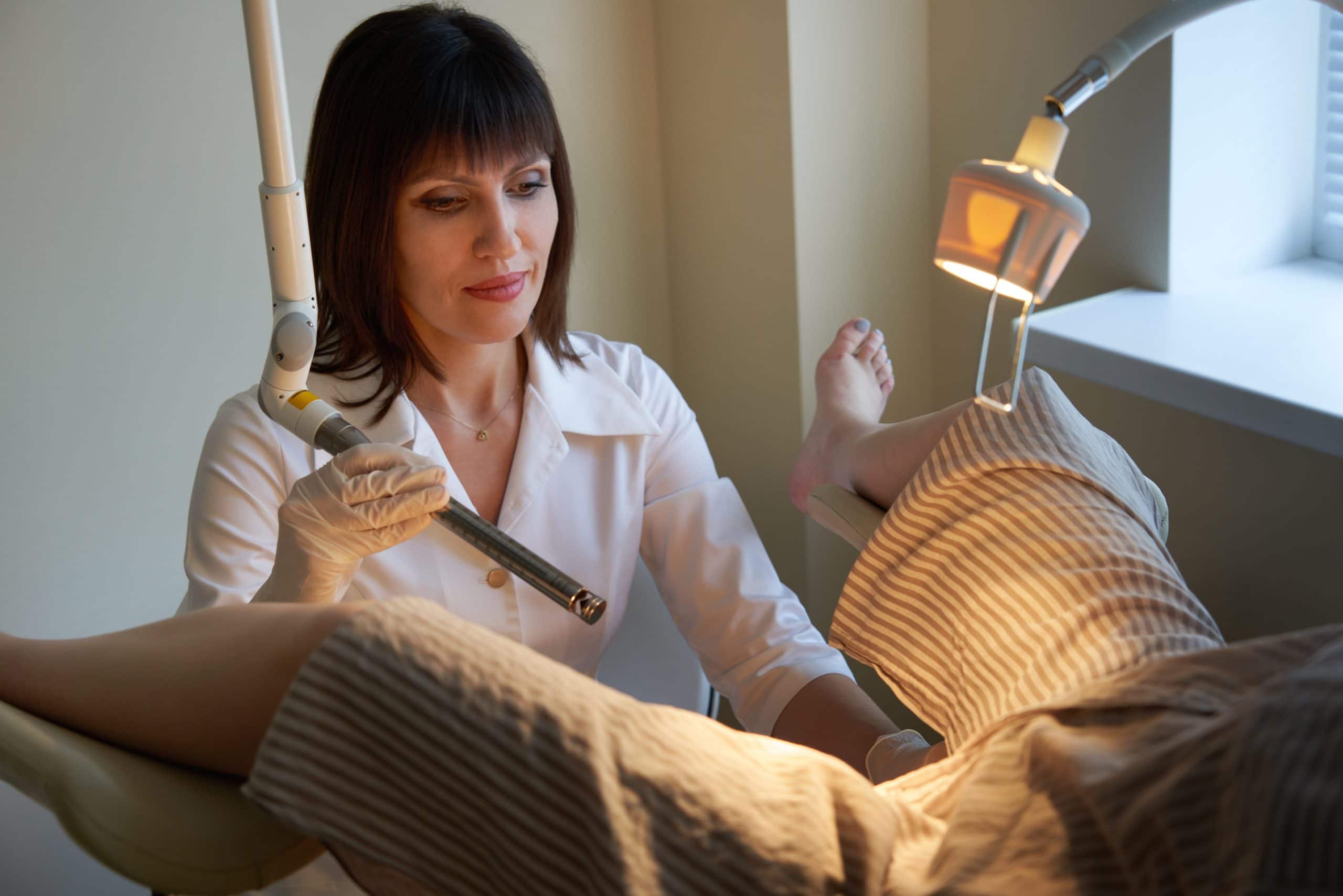
Everything You Need to Know About Vaginal Rejuvenation
- February 18, 2022


It’s difficult to feel out of control of your body, especially when it involves the most intimate part of your life. You don’t hear the phrase ‘laser vaginal rejuvenation’ being thrown around much, and a big part of that is because in our still conservative Asian culture, the topic of sexual health and wellness can seem quite taboo. However, vaginal tightening procedures do not have to remain a sensitive topic. As part of our physical well-being, there is no reason to be uncomfortable especially when it is a natural process of life. Just like how it is common to undergo dermal fillers or skin laser treatments to lift drooping skin and restore elasticity, it is also normal to undergo vaginal tightening treatments or laser vaginal rejuvenation procedures to do the same for the skin and other bits down under.
This article will aim to answer your questions regarding laser vaginal rejuvenation by going through these topics:
Read on to find out more!
Changes in a woman’s vagina occur when physical changes happen with age. Some of the factors involved are the pelvic floor condition in youth to elderly stages, childbearing, and hormonal factors such as the pre-menopausal to menopausal phase of life.

Firstly, we will consider the condition of the female body in its youth to its elderly ages. When a female is in the ages of 20s to 30s, their pelvic floor muscles are usually at their strongest and healthiest, just like the rest of their body. The ability of their pelvic floor muscles to voluntarily contract causes the lifting of that group of muscles and the ‘tightening’ or ‘closing’ of the vaginal canal. This is why Kegel exercises are often recommended to be done. They target the voluntary squeezing and relaxation of the pelvic floor muscles to help the vaginal muscle tone.
Some research has found evidence to suggest that as a female ages, the strength of the pelvic floor muscle contraction begins to reduce due to muscle mass loss that starts to decrease in the 50s and even more drastically after the age of 60 years. As we are familiar with the skin sagging that occurs from the natural loss of collagen and elastin in the body, the same naturally occurring loss of elasticity can also happen in the genital area and vaginal lining. Hence, these changes to the muscle tone contributes to changes in a woman’s vagina which might encourage them to seek options such as vagina tightening procedures.

Secondly, childbirth is likely to occur at some point of a woman’s life. The act of creating life within a womb is an amazing experience, but often takes a toll on a woman’s physical state of being. As the baby grows within the womb, the combination of increased weight and gravity places increasing pressure on the pelvic floor. When childbirth occurs, the passage of the baby through the elastic vaginal canal may also cause some form of trauma. The muscles may become overstretched or even torn especially with assisted vaginal birth, an episiotomy (a cut from the vagina towards the anus to make the opening bigger and easier for the baby to come out of), or even having significant tearing or a very large baby. This overstretching to the pelvic floor muscles may cause symptoms like urine leakage during coughing, sneezing, or exercising; it can also cause the feeling of vaginal pain or lack of sensation during sex.
Thirdly, as the female body progresses into the 50s, the female body undergoes hormonal changes as it prepares for menopause, and even when menopause has occurred. During the peri-menopausal and menopausal stage, estrogen levels begin to drop. The hormone deficiency may weaken the ligaments that support the pelvis and the pelvic floor muscles, causing increased laxity. There is also a reduced production of vaginal lubrication. The combination of all these three factors – natural muscle loss and reduced strength of contraction from ageing, reduced vaginal muscle elasticity from childbearing, along with hormonal changes – causes what is collectively known as the term ‘vaginal relaxation syndrome’. Other external factors that contribute to this condition include being overweight, smoking, and a long history of heavy or repeated lifting (weightlifting, work requirements, or high impact exercises) that overload the pelvic floor muscles and cause vaginal changes in women.
The main form of vaginal rejuvenation treatments available in SL Aesthetic Clinic is the Fotona IntimaLase laser vaginal tightening procedure. It is a non-invasive and non-surgical procedure, meaning that it requires no needles, cutting through any skin or tissues, and also does not require any anaesthesia. Fotona IntimaLase uses laser therapy – more specifically, the Er:YAG laser, which can also be used on the skin surface – to introduce photothermal energy into the tissues of the vaginal canal and outer vaginal folds. The thermal heat created by the non-ablative laser (heating up the underlying skin tissue without harming the surface) stimulates the remodelling and synthesis of new collagen fibres in these areas of the vagina. This helps to tighten the vaginal walls and strengthen the vaginal wall support, addressing the issue of vaginal relaxation syndrome, plus improving the appearance of the vaginal exterior. It can also help treat urinary stress incontinence, but not all types of incontinence. Stress incontinence is primarily the type of inability to hold urine due to weakness of the pelvic floor muscles, which laser vaginal tightening can help with.
To support the results of the Fotona IntimaLase laser vaginal rejuvenation procedure, it is always recommended that the individual address other external factors that can contribute to the vaginal relaxation syndrome. This includes factors like managing your weight, as being overweight can contribute to excessive pressure on the pelvic floor muscles and subsequent weakness. Lifestyle factors also count. Things like exercises, which is an overall great habit, should be assessed for the strength of the pelvic floor if the person is going to be consistently be involved in high impact exercises like cross lifting, or heavy weightlifting. Smoking is a habit that should be addressed if a person is worried about their vaginal laxity. Smokers often have a chronic cough which puts enormous pressure on the pelvic muscles over time, causing weakening. The chemicals in smoking are also an irritant to the bladder which can contribute to urinary incontinence. Hence, it is important to note that although laser vaginal tightening can help with many women’s symptoms, it is not a cure-all and we need to ensure that the individual is holistically well for more optimal results.
There are several steps during this vaginal tightening procedure:

1. Pre-Procedure
A pap smear must be done first before the treatment of vaginal relaxation syndrome, which the female doctors at SL Aesthetic Clinic are able to do. This is to ensure that there are no abnormal cells in the vaginal or cervical region which may make an individual unsuitable for laser. A urine culture is also collected to ensure no bacterial or fungal infections are present. A check of the vaginal canal must also show that it is free of injuries or bleeding (hence, this should be done preferably 1 week after menstruation). Once cleared for treatment, the individual can thoroughly cleanse the vaginal area at home and come in for the laser treatment. A pap smear is not required for the tightening of exterior vaginal folds.
2. During the Procedure
A speculum (plastic cylinder that helps open up the vaginal canal) is inserted into the vagina, followed by the laser probe. Laser pulses are delivered to the tissue according to the suitable mode which produces gentle heat pulses into the vaginal mucosal lining. A separate hand piece is used externally on the vaginal folds.
3. Post-Procedure
There is usually minimal downtime, with most patients reporting the feeling of a slight but warm sensation during the procedure. Since the Fotona IntimaLase uses a non-ablative laser (which does not remove surface tissue like some CO2 lasers), this helps the individual avoid complications that other lasers may cause which does remove the surface tissue. This means that it is a procedure with little to no downtime, no discharge, and no discomfort after the procedure. Patients can return to their normal daily activities.
Yes, the vaginal tightening treatment is generally safe when performed by certified professional doctors who have been trained to perform the procedure efficiently and safely. There are also little or no side effects. Fotona IntimaLase is FDA-approved for stress urinary incontinence. It is also effective in vaginal tightening. The pap smear that you undergo before the procedure also helps to ensure that the vagina is healthy and suitable for the treatment. Despite these reassurances, you may still have some lingering questions regarding this procedure:
1. Is it possible to overtighten the vaginal canal from this procedure?
No, it is not possible to ‘over tighten’ the vaginal canal. There exists a separate condition called ‘vaginismus’ which causes the signs and symptoms of involuntary tightening and contraction of the pelvic floor muscles and vaginal canal which makes sexual intercourse or penetration extremely painful. This is the only condition which may be considered as an ‘over tightening’ of the vaginal canal and is a separate medical condition which cannot be treated or caused by this laser vaginal rejuvenation treatment. During the Er:YAG laser procedure that is used for vaginal relaxation syndrome, there is only the slight shrinkage of the existing collagen and stimulation of natural collagen production from the photothermal energy. This helps to enable regeneration of collagen tissues and elastin naturally.
2. How long does the effects of the treatment last?
A good effect of the Fotona IntimaLase procedure will last 12-16 months, depending on your individual condition. It really depends on whether your condition of vaginal relaxation syndrome is mild, moderate, or severe. This is assessed in combination with whether you may need more than 1 session.
3. How many treatment sessions do I need?
Your physician will determine the best treatment plan for you. The majority of patients have 2-3 sessions, with a month apart in between treatments. For cases which are not so severe, an individual may notice a difference after only one treatment; however, for severe cases of vaginal relaxation syndrome it may require a year of maintenance even after the initial 2-3 sessions. A follow up will be done 8 months after the initial treatment for cases which are not severe to assess and see if another session is required to be done. The number of sessions depends on your treatment concerns or your personal goals.
4. Lastly, is it painful?
No! As mentioned above, most women either do not feel any sensation (aside from the speculum in the vaginal canal which is similar to what happens in pap smears) or they may feel a slight heat sensation while the procedure is happening. Aside from some minimal swelling or redness after the procedure which will go off within a couple of days, depending on how sensitive the individual’s skin is, there is minimal to no downtime. Normal activities of daily living can resume as normal.
If you are unsure whether you will be a good candidate for the Fotona IntimaLase procedure, feel free to reach out to us so our friendly doctors can clarify your concerns. Generally, women who have undergone physiological changes in their intimate area from ageing, childbirth, or menopause are ideal candidates for this laser vaginal tightening treatment. Our team here in SL Aesthetic Clinic takes great care in assessing your individual medical and lifestyle history, understanding your desired goals and expectations, to help you with a treatment plan that addresses your vaginal laxity concerns. Contact us here today to get started on your journey!
Like what you read? Share them!